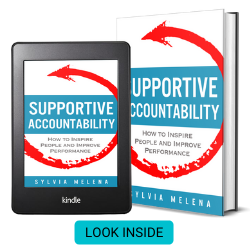Book organization matters.
It matters a lot.
And contrary to what some aspiring authors think, organizing your nonfiction book’s content isn’t difficult.
In a previous article, I shared “5 Ways to Structure a Nonfiction Book for Beginners.” However, even the more advanced book structures can be easy to achieve and can have a profound impact on your ideal reader. In this article, I show you six of these.

1. Problem-Solution
In the problem-solution book structure, you identify a significant problem your ideal reader is facing and describe its impact. You also provide your solution and help the reader envision the change it will bring. It’s a “before” and “after” approach.
The problem-solution nonfiction book structure is powerful because it promises and delivers transformation.
Problem-Solution Example

Speak with No Fear: Go from Nervous, Nauseated, and Sweaty Speaker to an Excited, Energized, and Passionate Presenter by Mike Acker1 illustrates the problem-solution structure.
The title and subtitle say it all.
Acker uses emotionally charged words, such as “nervous,” “nauseated,” and “sweaty,” to paint a vivid picture of the problem.
He uses similar language in his promise of transformation: “excited,” “energized,” and “passionate.”2
The book’s chapter titles also reveal its problem-solution focus:
- “Introduction: You Are Not Alone”
- “Strategy #1: Uncover & Clean the Wound”
- “Strategy #4 – Speak to One”
- “Strategy #5 – It’s Not About You”3
An excellent problem-solution book doesn’t just emphasize the mechanics of solving the problem; it inspires action.
2. System-Based
The system-based book structure introduces a complete system, and each chapter illuminates a part of the system. It provides a big-picture approach to solving a problem or meeting a need.
System-Based Example

The Snowball System: How to Win More Business and Turn Clients into Raving Fans by Mo Bunnel4 leverages a system-based structure.
The following chapter titles give the ideal reader a sneak peek into the results the system yields:
- “Chapter 4 – Get People to Like You (Authentically)”
- “Chapter 5 – Turning Prospects into Clients”
- “Chapter 9 – Strategic Client Planning for Long-Term Success”5
I love the way Bunnel describes his system: “It isn’t just a collection of tips… Once the parts are in place, the system will drive progress…”6
3. Model-Based
You can also develop a model to frame your book with each chapter showcasing an element of your model.
Model-Based Example
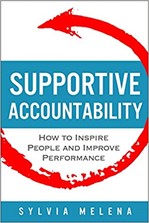
I created the Supportive Accountability Leadership™ Model as the framework for my first business book, Supportive Accountability: How to Inspire People and Improve Performance.7
Each chapter underpins one of the seven elements of the model — expectations, monitoring, feedback, support, recognition, accountability, and documentation.8
Here are four sample chapters:
- “Chapter 3 – Expectations that Inspire”
- “Chapter 4 – Monitoring: Focusing on What Matters”
- “Chapter 10 – The 4 P’s of Accountability”
- “Chapter 12 – The Case for Documentation”9
Introducing a new model in your field quickly establishes your thought leadership and builds your authority.
4. Story-Based
In a story-based structure, nonfiction book authors leverage the power of storytelling to organize their books. Here are four ways you can use stories as the foundation for your book:
- Use a central story that threads throughout the book and unfolds in every chapter,
- Tell a short story in each chapter,
- Sprinkle vignettes throughout your book, or
- Leverage a combination of these.
Story-Based Example
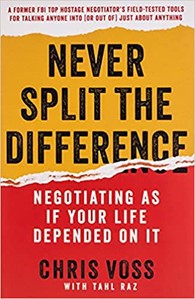
Never Split the Difference: Negotiating as If Your Life Depended on It by Chris Voss and Tahl Raz10 is infused with stories that grab the reader and make key points.
Here’s a look at three chapter titles:
- “Chapter 1 – The New Rules”
- “Chapter 2 – Be a Mirror”
- “Chapter 8 – Guarantee Execution”11
You can’t identify the book’s story-based structure by the table of contents. But the first words in each chapter give it away:
- “Chapter 1–The New Rules”
“I was intimidated.”
- “Chapter 2 – Be a Mirror”
“A brisk autumn morning, …”
- “Chapter 8 – Guarantee Execution”
“During a dangerous and chaotic prison siege …”
12
Every chapter starts with a riveting story from Voss’s real-life experiences in kidnapping negotiations, where people’s lives were at stake. These stories render immense credibility to the author and captivate his readers.
5. Training-Focused
Excellent training-focused business books are not just about imparting knowledge. They help the ideal reader take action and achieve results.
Training-Focused Example
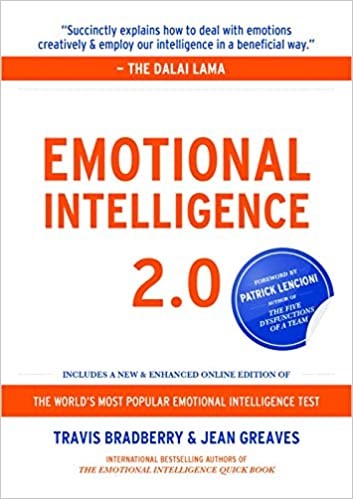
Emotional Intelligence 2.0 by Travis Bradberry and Dr. Jean Greaves13 provides an outstanding example of a training-focused nonfiction book.
The following sample chapters titles reveal the training-focused approach:
- “2. The Big Picture”
- “3. What Emotional Intelligence Looks Like: Understanding the Four Skills”
- “4. Digging In: An Action Plan to Increase Your EQ”14
The structure sets the stage, teaches the four skills, and promotes action-taking.
The book also provides readers with a code to complete an online emotional intelligence assessment as part of their development.
Here’s another clue that this book is training-based.
The Amazon book description reads:
“Emotional Intelligence 2.0 delivers a step-by-step program for increasing your EQ via four core EQ skills that enable you to achieve your fullest potential:”15
A heavy focus on practical skills development and application is the hallmark of the best training-focused nonfiction books.
6. Combination Structure
Many successful authors use a combination of nonfiction book structures to organize their books.
If you’re eager to execute the combination structure, keep it as simple as possible. If not skillfully crafted, using too many book structures could complicate your book and confuse your ideal reader.
Combination Example
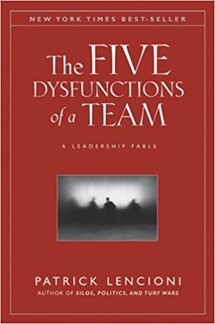
In his book, The Five Dysfunctions of a Team: A Leadership Fable,16 Patrick Lencioni masterfully combines story-based and model-based structures.
His table of contents breaks down the book into three main sections:
- “The Fable” (story-based structure),
- “The Model” (model-based structure), and
- Final pages (this section is not titled).17
These are all the chapters in story-based section, “The Fable:”
- “Luck”
- “Part One: Underachievement”
- “Part Two: Lighting the Fire”
- “Part Three: Heavy Lifting”
- “Part Four: Traction” 18
These chapters guide the reader through the story’s beginning, middle, and end. Even if you’ve never read the book, you can decipher the crux of the story: turning around underachieving teams.
Here are the chapters titles for the second section, “The Model:”
- “An Overview of the Model”
- “Team Assessment”
- “Understanding and Overcoming the Five Dysfunctions”19
If you think this structure is too simplistic, consider this. To date, The Five Dysfunctions of a Team has sold over 3 million copies and has been translated into over 30 languages.
Simplicity sells.
Nailing Your Book Structure is Crucial
A stellar nonfiction book structure is much more than organizing your thoughts. Rock-solid structure can:
- Create and rewarding reader experience,
- Deliver the promised results,
- Contribute to your book sales,
- Inspire reader action, and
- Boost your thought leadership and credibility.
Investing time, energy, and resources into crafting a compelling nonfiction book structure pays off.
Get Your Free Starter Kit
Start your nonfiction book the right way with your FREE Nonfiction Book Starter Kit.

Write Your First Draft — FAST
Have you been yearning to write your first nonfiction book, but don’t know where to start?
The “How to Write a Nonfiction Book That Sells” course will take you from vague idea to the first draft of a nonfiction book that sells. Find out more below.

About Sylvia Melena

SYLVIA MELENA is the Founder and CEO of Melena Consulting Group, a leadership and management consulting, training, and publishing company. She is also the international award-winning author of Supportive Accountability: How to Inspire People and Improve Performance and the Vice President of the San Diego Book Awards Association. As an unknown author with zero platform, Sylvia’s first book gave her exposure in the Society of Human Resources Management HR Today, Entrepreneur, the Human Performance Association, My Quest for the Best, LEADx, Fit Small Business, and other outlets.
REFERENCES: 1, 2, 3 Acker, Mike. Speak with No Fear: Go from a Nervous, Nauseated, and Sweaty Speaker to an Excited, Energized and Passionate Presenter. Seattle, WA: Advance, Coaching & Consulting, 2019. 4, 5, 6 Bunnell, Mo. The Snowball System: How to Win More Business and Turn Clients into Raving Fans. New York, NY: PublicAffairs, 2018. 7, 8, 9 Melena, Sylvia. Supportive Accountability: How to Inspire People and Improve Performance. La Mesa, CA: Melena Consulting Group, 2018. 10, 11, 12 Voss, Chris, and Tahl Raz. Never Split the Difference: Negotiating as If Your Life Depended on It. New York: Harper Business, an Imprint of HarperCollins Publishers, 2016. 13, 14 Bradberry, Travis, and Jean Greaves. Emotional Intelligence 2.0. San Diego: TalentSmart, 2009. 15 Bradberry, Travis, and Jean Greaves. “Emotional Intelligence 2.0.” Amazon. TalentSmart, 2009. https://www.amazon.com/Emotional-Intelligence-2-0-Travis-Bradberry/dp/0974320625. 16, 17, 18, 19 Lencioni, Patrick. The Five Dysfunctions of a Team. New York, NY: Jossey-Bass, 2002.


